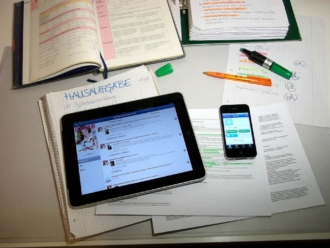A social media business profile can be a powerful way to connect with your ideal customers. But it can be frustrating to publish information online only to find that your conversion and engagement stats are dropping. A key challenge in social media marketing is figuring out how to create content that stands out in your industry and increases the likelihood of your customers seeing your posts.
There isn’t a one-size-fits-all solution for social media posting. The success of your posts depends on who your audience is and what kind of business you’re marketing. There isn’t a “perfect” time to post on social media because a time that works for one company might not be effective for another industry.
Being proactive in creating high-quality content is the first step. You also need to know the times that are best for your particular business to post on social media to maximize engagement. Then, you can schedule your posts to target these ideal hours and increase digital interaction.
Know your audience
One element of social media marketing is knowing when your target demographic spends time online. This varies depending on your specific audience and industry. You need to know when your audience will likely see the post and engage with the content you share.
Even if your customers don’t see the post immediately, there’s a possibility the information will pop up in their news feed within the first 24–48 hours after posting. But the ideal time for engagement really is within the first hour or two.
For example, if your target demographic is in the United States, then make sure you post during the morning, daytime, or evening hours. Your immediate engagement will go down if you publish a post when it’s the middle of the night in the U.S.
Also, think about the daily activities of your demographic. If your ideal customers are working nine-to-five jobs, then you might have a better engagement at lunchtime or in the evening hours. On the other hand, if you’re targeting B2B interactions, then posting mid-week in the morning hours can be a great window of time to reach other business owners.
Know the platform
It’s also essential to understand how the algorithms work on different social media platforms. In the early days of social media, these websites listed posts in the news feed chronologically. So when you looked at a social media platform, you saw the newest content first.
Now the algorithms prioritize posts from friends and family over brand content. As a result, it’s harder for businesses and brands to get attention for their organic content. When a post gets a lot of engagement (likes, comments, and shares), it increases the post’s visibility for other people as well. So posting at the right time can “hack” the algorithm to increase the number of people you might reach.
Track peak times on social media
Peak times vary depending on the social media platform you’re using. These variations make sense since there are variations in the types of people using each social media site.
For example, Instagram and Facebook are social platforms where people spend time for entertainment. The highest activity on these sites happens when people have time to relax: during a commute, on a lunch break, or in the evening hours.
On the other hand, LinkedIn is a platform for careers and business, so the highest engagement usually happens during business hours.
When designing your publishing schedule, consider the following Hootsuite data about the best times to post on social media:
- Facebook: B2B businesses should post on Tuesday, Wednesday, or Thursday, between 9 a.m. and 2 p.m. EST. B2C posts get higher engagement on Monday, Tuesday, or Wednesday, at noon.
- Twitter: B2B posts perform well between 11 a.m. and 1 p.m. EST on Mondays and Thursdays. B2C posts are best between 12 p.m. and 1 p.m., Monday through Wednesday.
- Instagram: Optimal posting times on Instagram vary according to industry, but generally are between 12 p.m. and 1 p.m. Monday through Friday.
Like any other business system, consistency provides data to help you measure results accurately. Post content regularly, using similar content to see the optimal performance times for your brand.
Use tools for social media planning
Posting on social media is most effective when you have a publishing schedule in place. The problem is that social media marketing can be time-consuming, which is why it’s smart to leverage automation tools. If you need help gathering content to share on social media, then this social media post request form can be a great resource. Another option is to add social media share buttons to any form, making it easy for customers to spread the word with the click of a button.










Send Comment: